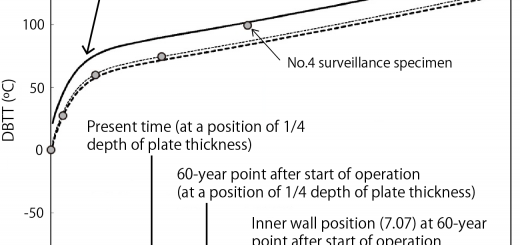Japanese nuclear watchdog’s order to ban restart of Monju reactor indicates how disorganized the operator is Nuke Info Tokyo No. 155
It has been decided that the Japan Atomic Energy Agency (JAEA), the national research institute that operates the Monju prototype fast-breeder reactor in Tsuruga, Fukui Prefecture, will be ordered to rebuild its maintenance and safety management systems. This order was issued by the Nuclear Regulation Authority (NRA) following the agency’s failure to conduct nearly 10,000 inspections on reactor devices and equipment and sloppy measures taken by JAEA after the failure came to light.
This order prohibits JAEA from engaging in preparatory work, such as reloading the nuclear fuel, to resume reactor operations. Inspections for ensuring safety of the reactor are excluded from this order. The order will be effective until the agency revises its maintenance and management systems, and the regulator verifies the agency’s reports on the improvements. The harsh order was issued in response to the agency’s skipping of inspections, changing inspection intervals without taking proper procedures, and their failure to take appropriate measures even after this sloppy management was made public. JAEA President, Atsuyuki Suzuki expressed his intention to step down on the day when the order was issued. He can hardly escape the charge that he hastily resigned to dodge possible severe condemnation from the public.
The report JAEA submitted to the NRA on January 31, 2013 said its analysis on the fundamental cause of these questionable practices was carried out in accordance with the “systematic procedures of human-error analysis developed by the great Tokyo Electric Power Co. based on human-factor technology for the purpose of effectively analyzing accidents and other problems.”
However, this analysis, described in such pompous and vainglorious language, did not make any mention of JAEA’s (1) lax management, (2) insufficient checking functions, (3) inadequate efforts to improve its safety management program, (4) lack of communication between the management and front-line workers, (5) weak corporate safety culture, and other problems. This indicates that the analysis reveals nothing of importance and is therefore worthless.
The JAEA leadership came to know about the skipped inspections after the regulator pointed out the irregularities. The report revealed that JAEA failed to carry out a full-fledged analysis into the cause of such slipshod practices. NRA member Kunihiko Shimazaki sharply criticized JAEA, saying that the agency had attempted to make a short-term fix by compiling a report full of empty jargon, and the fact that such a questionable organization is allowed to exist is a problem in itself. His remarks seem to have hit the nail on the head.
JAEA has thus far carried out seven analyses into fundamental causes of accidents and problems that have occurred at its facilities. The first was conducted following the 1995 leaking of sodium coolant during the trial operation of Monju, causing a fire. Other cases include trouble involving a sodium leakage detector, and a 2010 accident in which a fuel exchanger fell into the reactor. (See Nuke Info Tokyo 126, 134, 138, 139)
JAEA nevertheless continued to make similar, off-the-point comments in its reports on these accidents. Why is it that the agency repeats this inexcusable practice again and again? This question should have also been included among the targets of its fundamental-cause analysis. The agency has been putting inspections of equipment under the charge of the manufacturers and also entrusting dealers with the work of managing inspections. It has been revealed that the intervals between inspections were managed and recorded manually by officials of the sections concerned, and that the unified, computerized management was not carried out. These facts, however, had already been brought to light in previously published analysis reports, and yet JAEA did nothing to improve the situation. What a disorganized, slipshod organization JAEA is!
In the JAEA Tsuruga office that controls the Monju project, the officials charged with the development of the project during the 18 years since Monju has been shut down due to the sodium coolant leakage accident have already retired and few people have full knowledge of the whole system. Moreover, the representatives of the suppliers of parts and equipment have also been replaced by the younger generation. Monju has not operated for any length of time since the 1995 sodium coolant leakage accident and fire. With the passage of time, the outlook for commercialization of the fast-breeder reactor is receding into the distance, and we can now consider that it has effectively disappeared.
To date, one trillion yen has been spent on the Monju project and an additional 55 million yen is being spent on maintenance each day. Which one of the JAEA staff in charge of taking care of the facilities of the stalled Monju reactor believes that the reactor will experience trouble-free operation after being restarted?
The indications are that Monju is becoming old and antiquated while lying idle, rather similar to JAEA’s Tsuruga office.
(Hideyuki Ban, Co-director of CNIC)

